I can’t believe I’m about to write a blog post about growing grass in the middle of a drought! I feel kinda crappy about it. But this is for the people out there that aren’t quite ready to dive in and remove their lawns just yet. Maybe it’s because you’re like me and can’t quite afford it yet or maybe it’s for emotional reasons.
Whatever the reason, let’s just say that despite living in Southern California during a record drought you still want to have that green grass under foot. I fully realize how reckless and selfish this want is. I fully understand how much this want goes against everything that I preach here on Mind Your Dirt. But when I look into these baby blues and see the joy that the green grass brings to my girl, all of that melts away in an instant.

How can I refuse her? Short answer? I can’t.
For now at least. In the near future I do plan to create a xeriscape solution, but I’m not ready for that yet. By the way, there is a difference between zeroscape and xeriscape. Check this out before boasting about your so called “zeroscape” yard.
There are also some incentives that are state or county funded for those of you that are ready to remove your thirsty lawns and replace them with native drought-tolerant species. Last I checked, it was $1.50 a square foot. Just be sure to take photos and apply before beginning the project or you may miss out on these incentives.
But as I’ve said, I’m not ready for the initial expense yet so this post is for those that still have that misguided 1950’s mentality of a white picket fence and a lush green lawn despite living in a drought-ridden desert. So how do we foolish folk continue this unsustainable practice in a place that gets no rain while also abiding the mandated water restrictions as well as keeping our water bills at a manageable level? Well, here are some tips that have proven to work like a dream. These are the things you can do right now to help if you’re in the same boat as me.
1) Get the right species.
You’ll want to go with a “warm season” grass like a St. Augustine or a Bermuda. Mine is a Bermuda. It may get a wee bit brown in the heat of the summer, but it won’t die off completely like a “cool season” grass will. Warm season grasses love full sun and are very drought tolerant. Even still, you should be prepared for some browning towards the dryer summer months. It’s just something you must accept during a drought. There are some ways to drastically reduce this however.
2) Grow it tall!
This is a big one that will help extend the “green” life of your grass during the summer. Grow it as tall as you can, at least 6 inches high. Set your lawn mower to it’s maximum height beginning in early spring. I use an old fashioned push mower because I have a relatively small amount of grass and I like the quiet peaceful non-gas needing methodology. The longer the grass is, the more water retention it will have. Less sunlight can get to the surface of the ground so less water can evaporate. You also will get a lot less weeds because they’ll get too much shade to grow big and strong. The longer grass will out compete the weeds in other words.
3) Fertilize it.
I fertilize heavily in the spring and summer to make sure the grass is getting all of the nutrients it needs to be healthy and strong. This translates into greener grass that has even better drought resistance and water retention. I use a commercial organic fertilizer as my base, but there’s an even better way to make sure that plenty of nitrogen is present all the time, and nitrogen is what’s going to help keep that grass green. Leave your clippings right where they lay! Now’s the time to not rake up all that nitrogen rich green manure and add it to your compost bin, save that for wetter Winter months. In most situations, lawn clipping are enough to feed the lawn itself. But we want a super strong lawn so that we can use less irrigation, so more food will be better.
4) Amend the soil.
This will add to your regiment of fertilizing and extra step. For my part of the world, the soil has a lot of clay and is very alkaline. Usually around 7-8 on the scale. The perfect balance for healthy plants typically lies right between acidic and alkaline, usually around 5.5 or 6. This is the general rule for many plant species. To deal with the clay content which can impact drainage, I add good ol’ fashioned gypsum. It supplies a small amount of fertilizer in the form of calcium, but more so than that, it helps break up the clay to help improve drainage.
My second soil amendment is peat moss. Peat helps decrease the pH levels in alkaline soil which will definitely help to make the grass stronger, but more importantly it will help retain even more water! It’s like a sponge. I broadcast enough so that there’s at least a 1/4″ layer on the surface of the soil. It will want to stay on the surface of the grass at first, so I use a rake to gently work it down to the dirt. In bald patches, I’ll add a thicker layer with some grass seed in the early Spring. A word of wisdom about peat moss that should be mentioned is that there is a finite amount of it in the world. Normally I don’t like using nonrenewable resources, but until this drought breaks I’m in emergency mode over here.
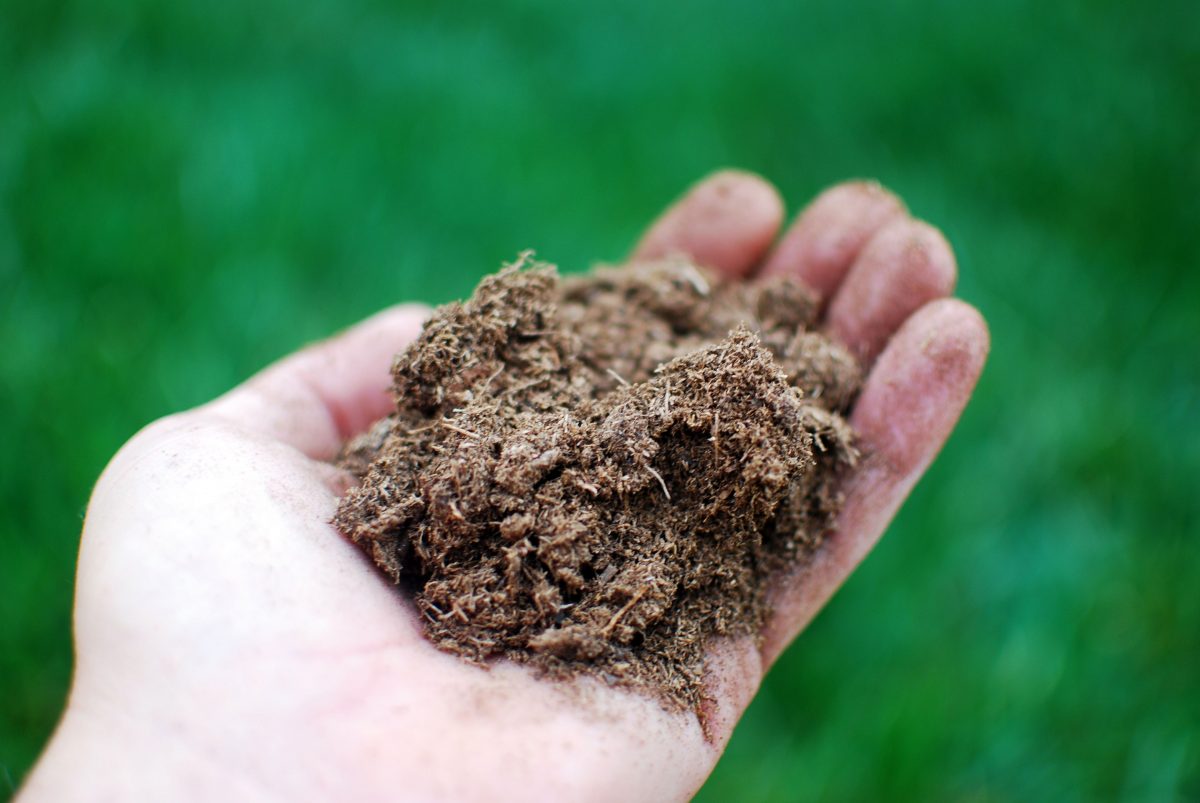
5) Smart watering practices.
Okay, so you’ve fertilized, amended and stopped cutting you grass like it was a putting green. Smart! But how about the actual process of irrigation? California is now requiring that we use 25% less water across the board. I’m aiming for 50% less in my home and I’m getting close to that mark! I’ve set up a nice and cheap greywater system that helps cut back irrigation all over. I have a micro-irrigation installed as well that uses drip irrigation directly into the plants roots. My thirsty lawn, however, is on a regular irrigation system that was installed by the investors that flipped my house before I bought it. The only good thing about that is I can control the time and amount of water with recordable precision so making adjustments and seeing the results have become very methodical and scientific to me.
In areas with little to no rainfall, you should always water in the early evening just after sunset. This gives the grass plenty of time to drink it all up before the sun evaporates anything. If you’re in an area with more humidity and rainfall, watering at night can cause mold and disease. But if that’s the case, why are you reading about living in a drought? If you’re irrigating during the heat of the day, you’re loosing a huge amount to evaporation. Sometimes as much as 60-70%! So knock it off.
The current irrigation mandate limits watering to no more than seven minutes every other day. I’ve played around with that limit and found I can do four minutes on alternate days and I’ve even begun to cut that back to three minutes. If it rains, I don’t irrigate for four days afterwards. It’s actually become a fun experiment to keep pushing the limits to see how little water I can use while still maintaining a healthy looking lawn.
Here’s my lawn after I applied all of these practices. I’m currently using 40% less water than is state mandated even after the recent increased restrictions. I even got a thank you message on my last water bill! It is my hope that this years Summer will be much less taxing for my lawn now that I’ve bolstered and prepared it as best I can.
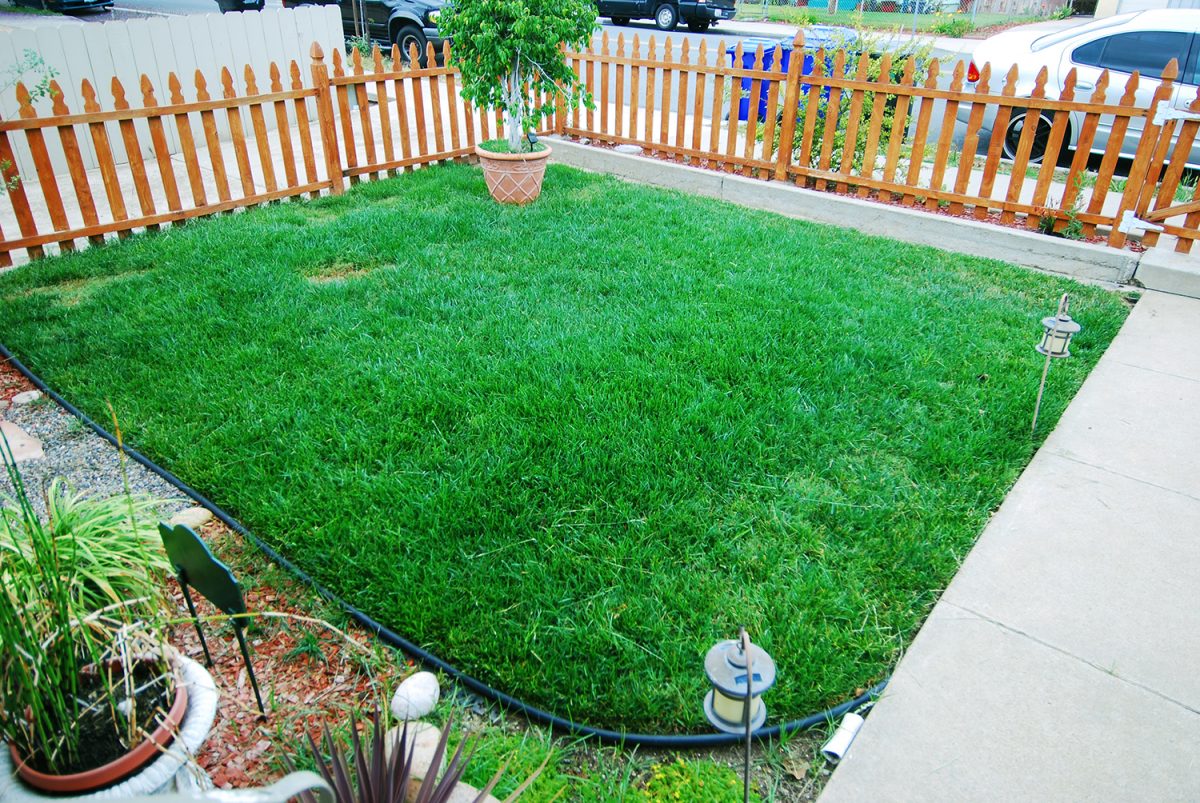
Notice the patches in the background in the photo above? That’s the last remaining holdouts of the crabgrass. It used to be the entire half of this lawn section, but I’ve been taking the weed-whacker to it every week and bringing down to the dirt. Then I add more peat moss and a bit of Bermuda grass seed. It’s taken a few years, but the grass is slowly taking over and now all that remains are these three lonely and sad patches. Oh, and no chemicals were needed at all.
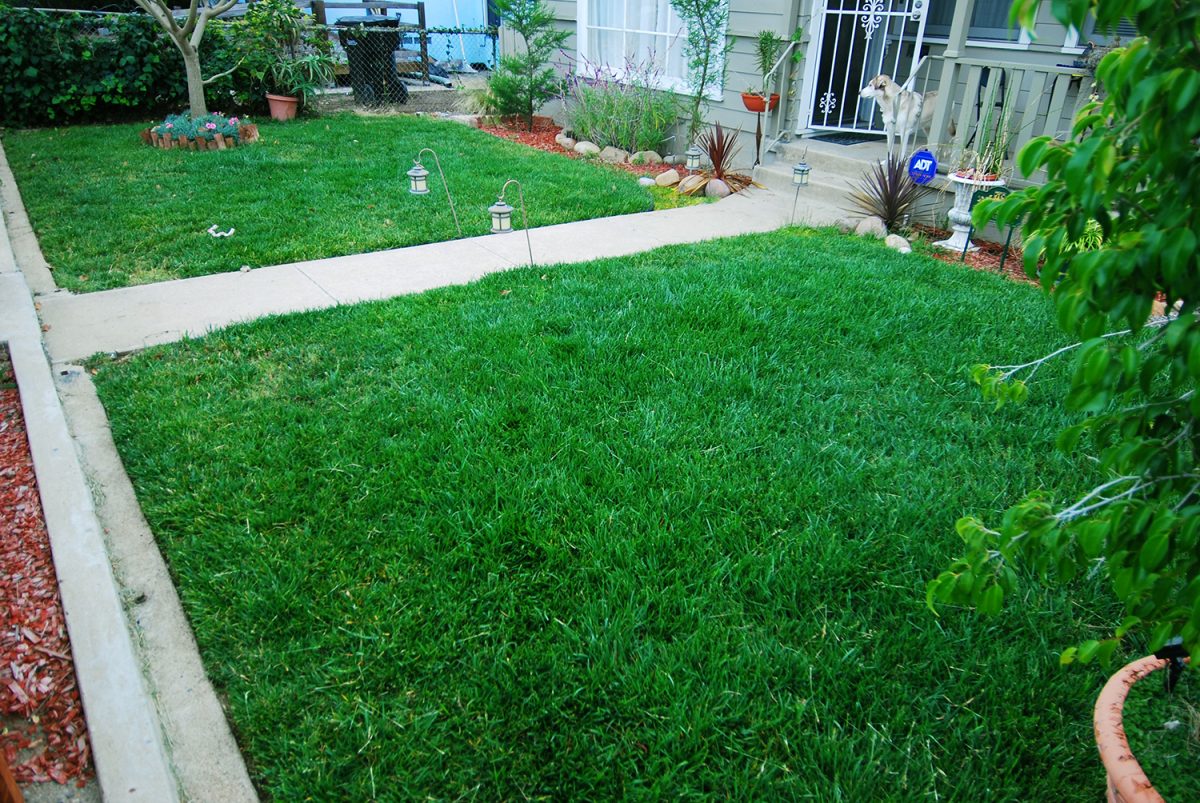
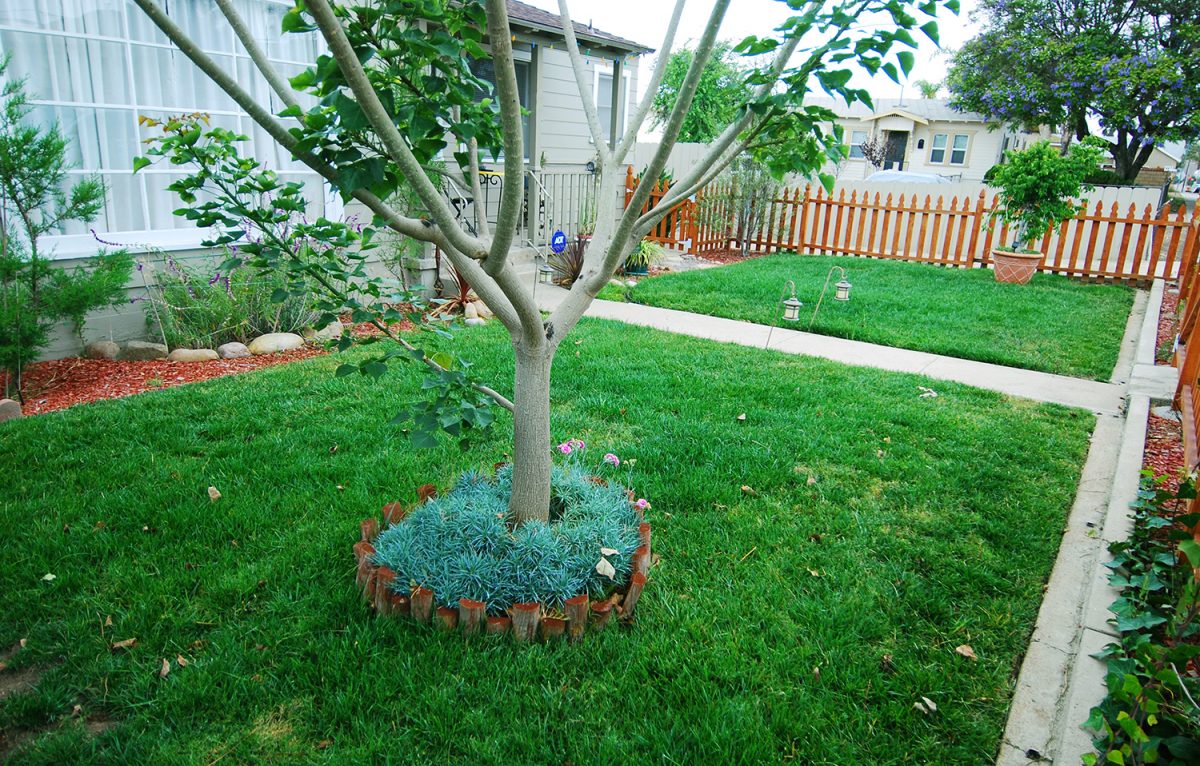
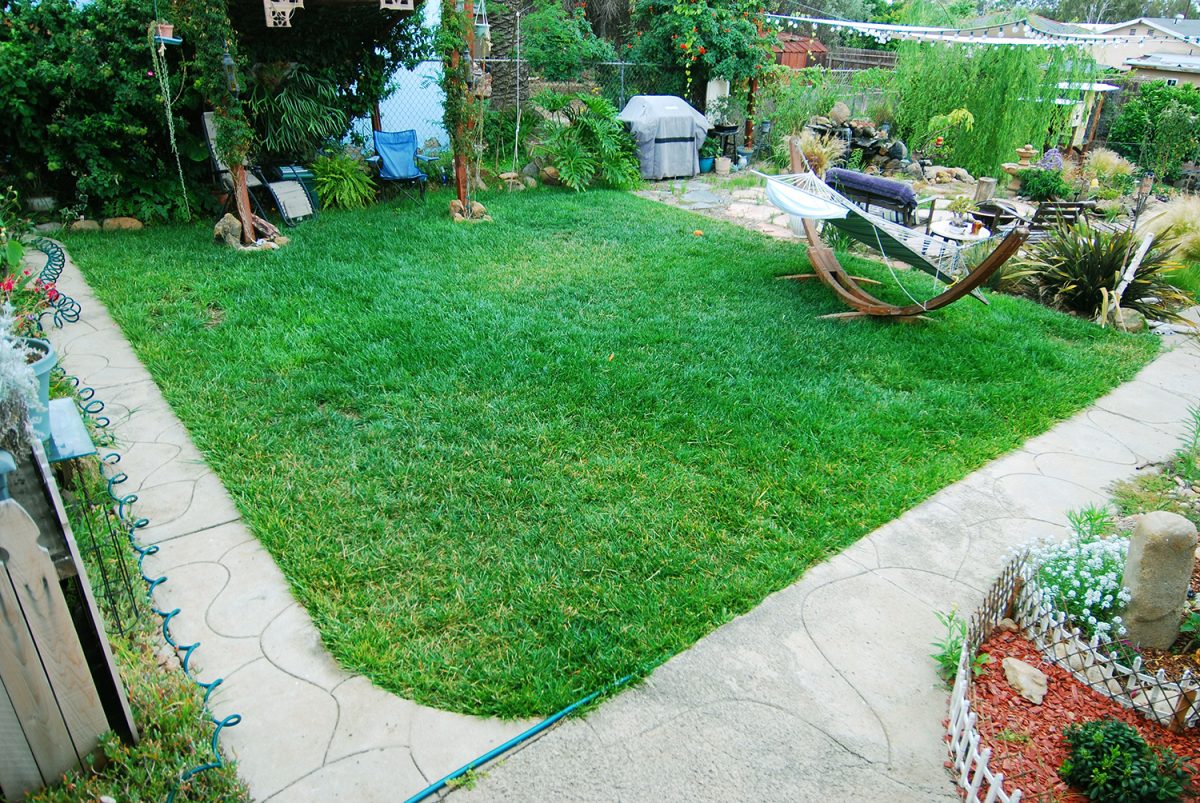
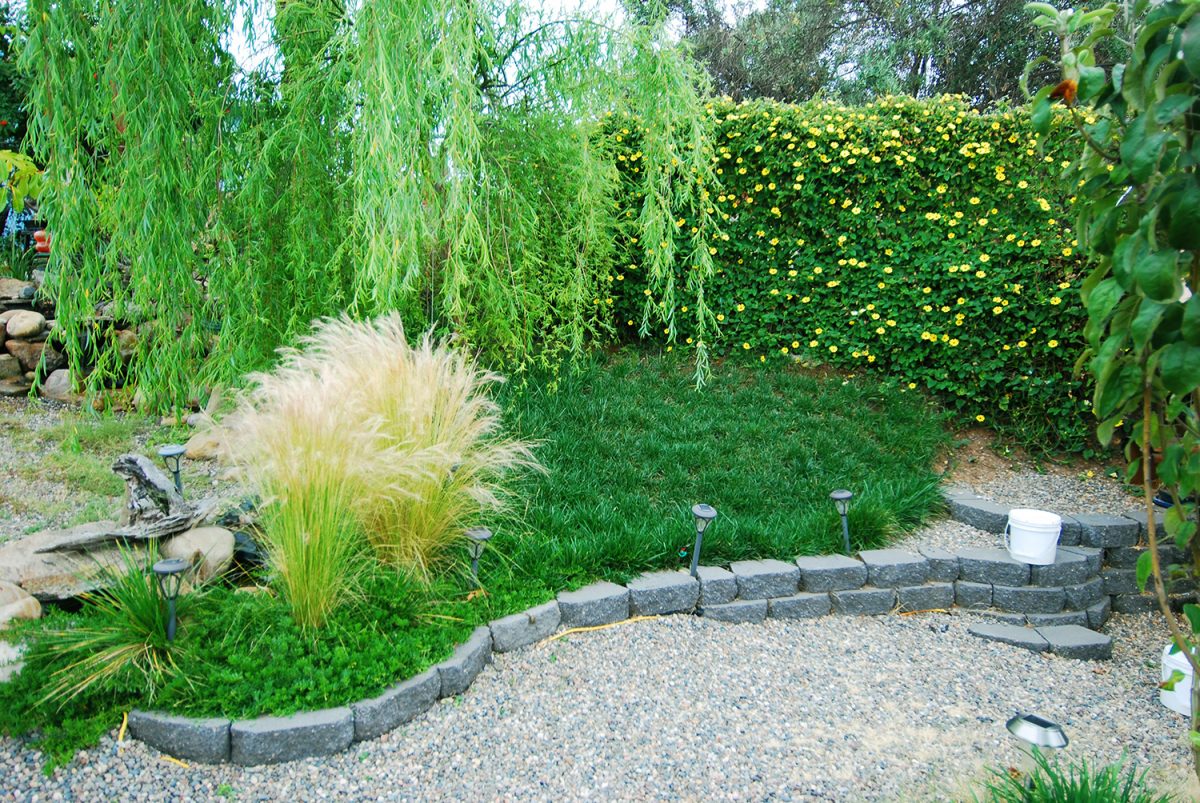
So until you’re ready to do the responsible thing and ditch the lawns altogether, please at least follow these tips to help reduce the amount of water needed! If you’ve already gotten rid of your lawn, good for you! You’re doing the responsible and noble work by not living beyond your means and by not supporting an ecosystem that is grossly unsustainable. You are a better person than I am. For now.
[polldaddy poll=8883104]
So, I’m pretty sure that people have a lot of opinions about this topic, so please leave me some feedback in the comments below!
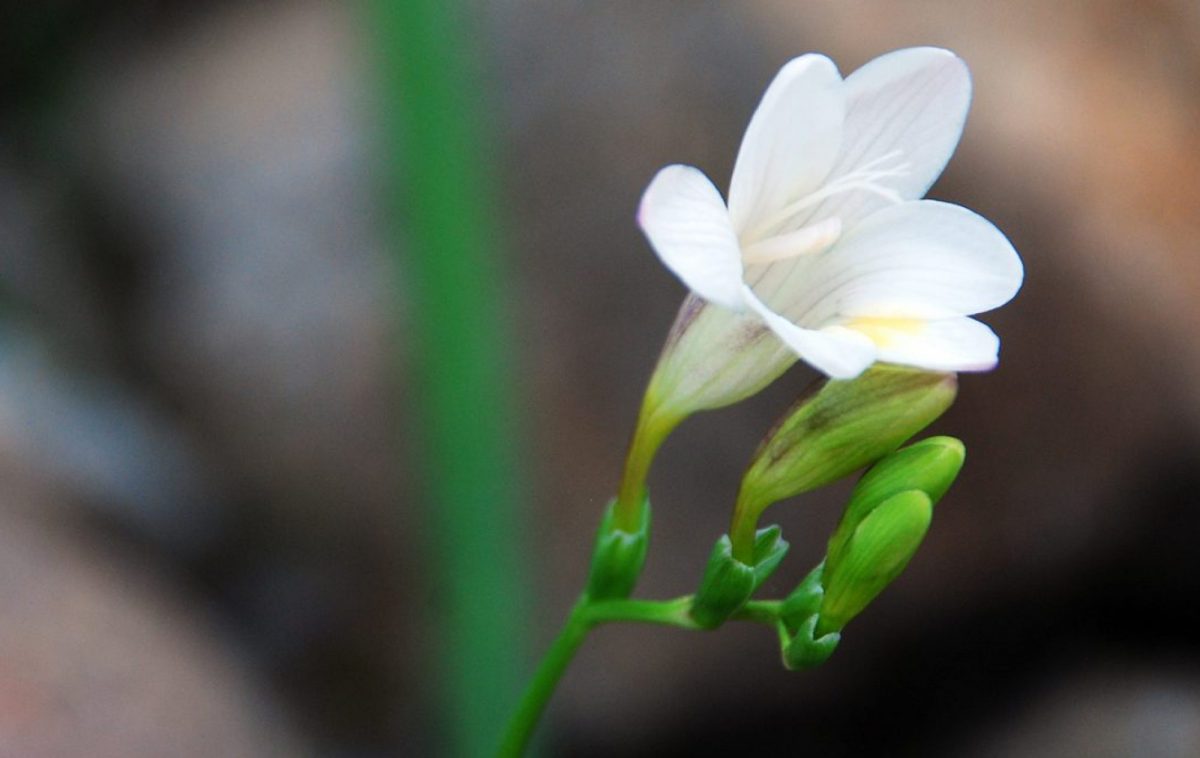


Meh, love ya but don’t like monoculture grass in the humid climates, let alone in the desert. Yours is beautifully kept, though.:)
I hear ya Aggie. It will be phased out eventually. I just want it to be as efficient as possible while it’s here if that makes sense.
: ) Indeed!
I believe that the word OASIS fits here. And, that’s just fine!
Thanks Linda. When life gives you outdated-unsustainable-1950’s mentality-shortsighted landscaping, one must make the best out of it.
My but your grass does look so green James! Almost as green as the grass, the fields in Ireland – where it rains everyday! Wish I could send you all some of our rainwater, we hear a lot about your drought here, just hoping that things will improve for California. Well done with your advice on keeping a lawn going under those circumstance 🙂
It’s amazing to me how much we take the rain for granted until it’s gone. When I lived on the East Coast, it was never a passing thought. There are times now where I’m forced to reconsider the sustainability of where I’m living. It’s to the point where I begin to feel guilty for being a gardener if I stray but a little from native species. Somethings gotta give. Thanks for your comment though, it’s not easy keeping green grass in these conditions.